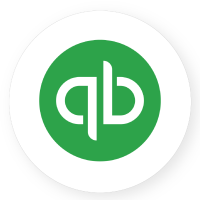SEO stands for Search Engine Optimization. It is the set of all processes that are done to boost a website’s ranking in the SERPs (Search Engine Results Pages).
In eCommerce, SEO is very important as it can attract a lot of organic traffic to the store without spending enough money on marketing. That’s not to say that marketing should be ignored. Rather, SEO and marketing should be done in tandem with each other.
People who are looking to start an online store often ignore the importance of SEO. They are more preoccupied with getting their site live and all the product pages up and running.
However, without any organic traffic, the store cannot perform well. There will be very little sales and it might lead to more loss than profit.
In this article, we will be discussing some key SEO factors that you should consider before launching an eCommerce website.
Table of Contents
5 Key SEO Factors to Consider Before Launching an Ecommerce Site
1. Create a Content Strategy

In SEO, content plays a very important part. It is through content that sites optimize themselves for their target keywords. It is also content that attracts internet users and develops their interest in the brand.
According to marketmuse.com, a content strategy is “…the ongoing process of transforming business objectives and goals into a plan that uses content as a primary means of achieving those goals.”
From that definition, we can understand that marketing and lead conversions (two business objectives) can be achieved using content.
Content strategies are used to devise and create content that is relevant to your e-commerce site. This way, more traffic comes to your site and that increases the chances of sales.
Now, content strategies on their own are not directly related to SEO, but the actions you take according to them directly affect it. This will become clearer later in the article.
2. Create Plagiarism-Free Content

In SEO, content uniqueness is essential. It is easier for content that has the least amount of plagiarism to rank high in the SERPs.
Before creating an e-commerce website, it is a good idea to plan and create some content that will generate people’s interest in the online store.
That content needs to be free from plagiarism because of two major reasons.
- Search engines penalize plagiarized content
- Readers are put off by plagiarized content.
The consequences of plagiarism become very harsh due to these two reasons. First off, search engines can penalize websites with plagiarized content. There are two penalties: web page rank reduction and site removal.
Secondly, users simply skip or click away from plagiarized content. This reduces dwell time, which is a ranking factor. Low dwell times are bad and the opposite is true as well.
Both of these consequences i.e., penalties and user disengagement, are bad for SEO. Hence, it is important to remove all sorts of plagiarism from your content using online tools, such as a paraphrase tool.
Otherwise, the content will cause the website rank to fall and this will decrease the organic traffic.
Paraphrasing tools can rewrite text using completely different words and phrases so that it looks different than the original. The meaning, however, is preserved.
3. Create Error-Free Content
As you can see from the above discussion, the quality of the content is very important. Creating error-free content is just as important as creating plagiarism-free content.
Again, the issue lies with dwell time. If the write-up has bad grammar, it will decrease its readability. In other words, it will be more difficult to read. This can put off the readers, making them click away from the content.
This naturally results in extremely reduced dwell times and that signals to search engines that the page is not good. Consequently, the rank of the page hosting the content is reduced.
This problem can be easily rectified by using a tool such as a grammar checker. Grammar checkers can detect and correct spelling and tense mistakes. Using a grammar checker can ensure that the content is free from errors and has better readability.
This results in increased dwell times and that improves the SEO.
4. Do Keyword Research
Keyword research is one of the most important aspects of SEO. Without keyword research, it becomes very difficult to do SEO for a website. When you don’t know what kind of keywords to target, the intent of your content and website also becomes vague.
Vague intent is also bad for SEO as search engines cannot determine which searches they should show your site to.
Use tools such as Ahrefs and SEMrush to do keyword research. During keyword research, you should be looking at what keywords are related to your site and what keywords your competitors are using.
You should also look for long-tail variations of the primary keyword and optimize the site for them. Once you have all that information, you can start writing content that targets those keywords.
This directly affects SEO, as keywords are used by search engines to determine which website is shown during the relevant searches.
5. Reduce Loading Times
This is a bit of an obscure tip for SEO. Loading times do not directly affect SEO, but they are linked to the bounce rate. Bounce is a phenomenon in which a person visits a website and then leaves without moving on from their landing page.
A high bounce rate is very detrimental to SERPs ranking as it signals to search engines that the website is not giving the right value to the visitors.
Users, nowadays, have very high standards, and they expect websites to load in under three to two seconds. According to a study, websites have a higher conversion rate if they load in under 2.4 seconds and it decreases drastically if the loading time is more than 5.7 seconds.
Loading times can be reduced by reducing the number of plugins, and size of images. Employing the JPEG format for images is also recommended. JPEG is more suited for websites as it is lightweight. Reducing the size of images makes them easier to load.
A quickly loading website has much better chances of getting sales and user engagement than a slow loading site.
Conclusion
In this article, we discussed five SEO factors that should be considered before launching an e-commerce website.
It is necessary to not get shortsighted and only focus on making the store and product pages live. Obviously, those are important things, but everything has its place, and considering SEO factors comes first.
If the SEO of the site is not good, then the site will be unable to attract a substantial amount of traffic. However, by using content optimized for both SEO and humans, organic traffic can be obtained pretty cheaply.
Compared to standard marketing practices, SEO is much more cost-efficient and yields long-term results.












































